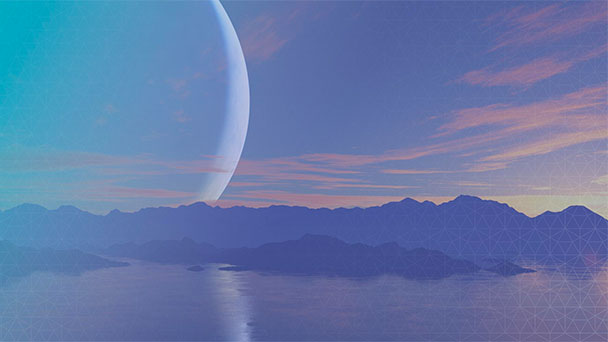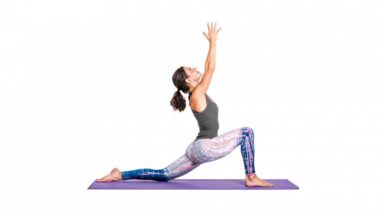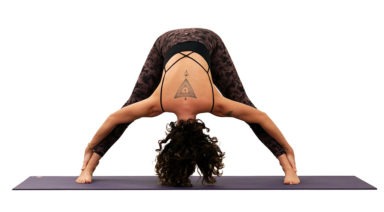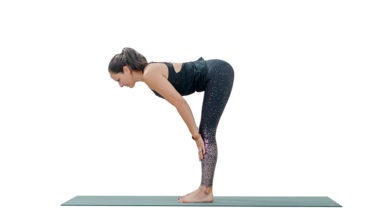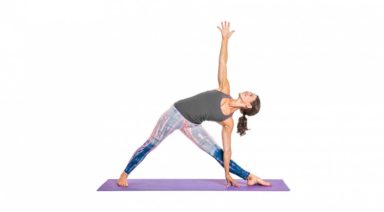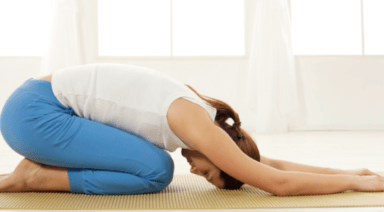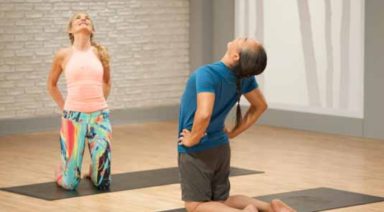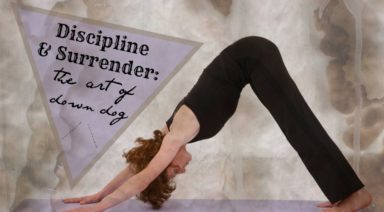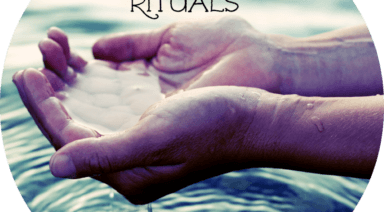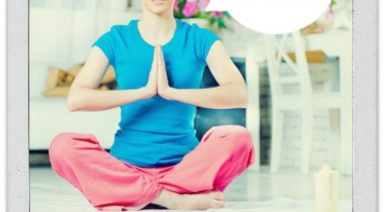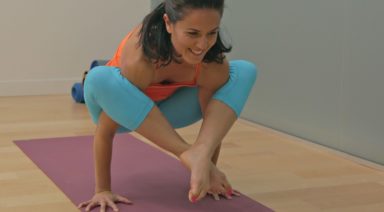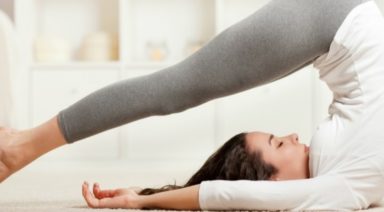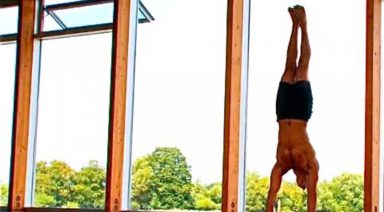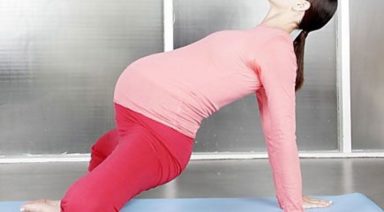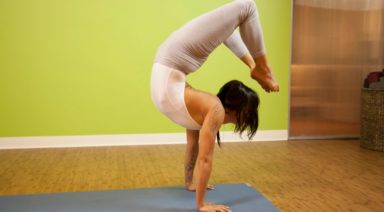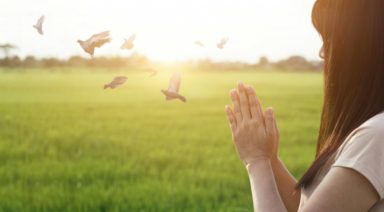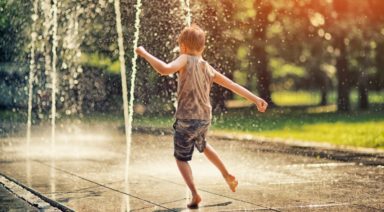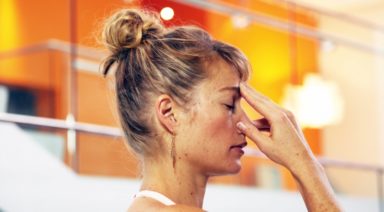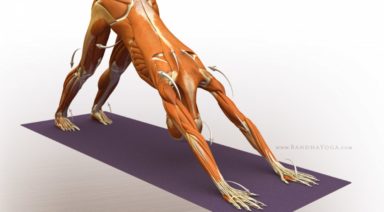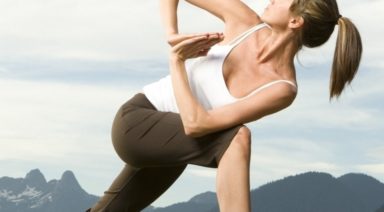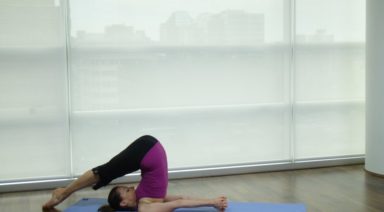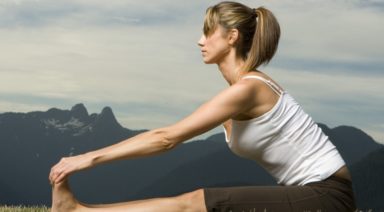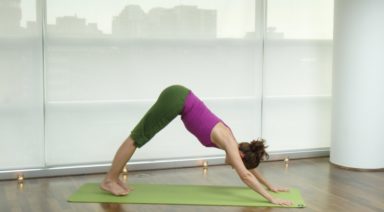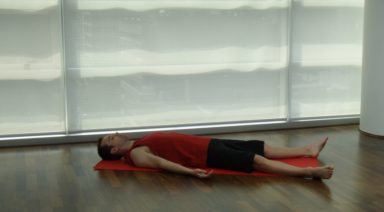Setu Bandhasana: Bridge Pose
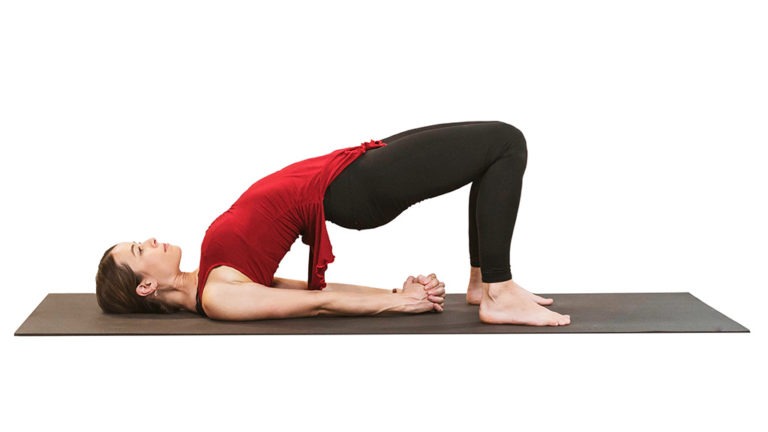
ADJUSTMENTS | BENEFITS | SEQUENCING | SANSKRIT | STEPS
Setu bandhasana (SET-too bahn-DAH-sa-na) provides a great stretch for the chest, hip flexors, and spine. Practice this pose to strengthen your legs and glutes or as a gentle inversion to calm your mind.
Philosophy + Origin
Like some other yoga poses, the name for bridge pose comes from its physical shape. The bridge pose is also a reminder of the opportunity to cross over from one place to another. The bridge is a connection between two different places, which can be physical, spiritual, or psychological. By forming a bridge with your body, you create a structure that invites transformation, one that can get you from where you are to where you want to be.
ADJUSTMENTS/MODIFICATIONS:
- For an additional shoulder stretch, interlace your fingers underneath your hips.
- Place a bolster or block under your pelvis for a more restorative version.
- Fold a blanket and place it under your shoulders for extra cushion.
STEP-BY-STEP:
- Begin lying on your back with knees bent, soles of your feet on the ground and knees to the ceiling. Place your feet parallel to each other with heels right under your knees.
- Place your arms by your sides, palms face down.
- On an exhale, press your feet firmly into the ground. Lift your tailbone off the ground, then lower back, then mid back.
- Press your knees forward, away from your hips.
- Lift your chest toward your chin, and your chin away from your chest.
- Keep your thighs parallel, gently hugging the inner knees toward each other.
- Hold for up to one minute. To release, gently lower your hips back down to the ground.
PREPARATORY POSES:
- Cobra pose | Bhujangasana
- Upward-facing dog | Urdhva mukha svanasana
SEQUENTIAL POSES:
- Fish pose | Matsyendrasana
- Upward-facing bow pose | Urdhva dhanurasana
COUNTER POSES:
- Happy baby pose | Ananda balasana
- Reclined bound angle pose | Supta baddha konasana
SANSKRIT:
- Setu = bridge
- Bandha = lock
- Asana = pose
PHYSICAL BENEFITS:
- Stretches your chest, spine, and hips.
- Strengthens your back, glutes, and hamstrings.
- Rejuvenates tired legs.
ENERGETIC BENEFITS:
- Calms your brain and soothes your central nervous system.
- Reduces stress and anxiety.
- Encourages transformation.
Legal Disclaimer Before participating in any exercise program or using any fitness products or services that may be described and/or made accessible in or through the Gaia Website and/or the Services, you should consult with a physician or other healthcare provider. Read more about Gaia’s Terms Of Use.
Anjaneyasana: Monkey Lunge Pose

Anjaneyasana (AHN-jah-nay-AHS-uh-nuh), also known as low lunge or monkey lunge, stretches the hips, gluteus muscles, and quadriceps while improving balance, concentration, and core awareness.
Philosophy and Origin:
The term anjaneya is a matronymic reference to the monkey god Hanuman using his mother’s name, Anjani. Lord Hanuman is a central part of Hindu devotional worship, believed to be an incarnation of Lord Shiva. The pose resembles a young, divine child (anjaneya), reaching towards the sky and the warmth of the sun, captivated by a glowing fruit in the sky as depicted in the traditional epic.
Sanskrit:
- Anjaneya: Lord Hanumān, the divine entity of spiritual significance
- Asana: pose


